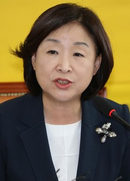2017 Shangean legislative election
| |||||||||||||||||||||||||||||||||||||
700 of the 750 seats in the Legislative Council 376 seats needed for a majority | |||||||||||||||||||||||||||||||||||||
|---|---|---|---|---|---|---|---|---|---|---|---|---|---|---|---|---|---|---|---|---|---|---|---|---|---|---|---|---|---|---|---|---|---|---|---|---|---|
| Turnout | 67.04% ( | ||||||||||||||||||||||||||||||||||||
| |||||||||||||||||||||||||||||||||||||
| |||||||||||||||||||||||||||||||||||||
A legislative election in Shangea took place between the 5th through the 14th January 2017 to elect 700 of the 750 members of the Legislative Council. Voting took place in all delegate constituencies of Shangea – 300 single-member districts, 250 proportional mandates and 150 occupational constituencies – in order to appoint 700 members of the Legislative Council with the remaining 50 nominated by the military. The date of the election was declared to be January 5th 2017 running through to January 11th - however voting was extended to the 14th January when concerns were raised over possible Senrian hacking of the election results.
The election was held during the 2016-17 Shangean Protests which saw protesters demand the immediate resignation of the premier Jiang Zhongyu and State Chairman Yuan Xiannian and the introduction of democratic reforms. The government responded by calling a snap election, the first in Shangean history. The pro-government Society for Restoring Benevolence and it's allies held a supermajority in the chamber but were weakened by the ongoing protests. The majority of the opposition united behind the big tent Democratic Action Alliance led by the People's Party which campaigned for democratic reform hoping to capitalise on the unpopularity of Yuan and Jiang. The Association for Promoting Democracy, a far-right party considered to be pro-government, also ran a notable campaign being seen to appeal to ultranationalist voters who previously had supported the government.
The election saw the Society for Restoring Benevolence and its allies lose their supermajority although they retained their overall majority. The Democratic Action Alliance also lost seats with the Association being the main winner in terms of gaining votes and seats. The result has been questioned by opposition groups who have accused the government of electoral fraud, with mass protests held in the aftermath of the election against the government. The protests ultimately resulted in a harsh government crackdown and the start of Normalisation.


